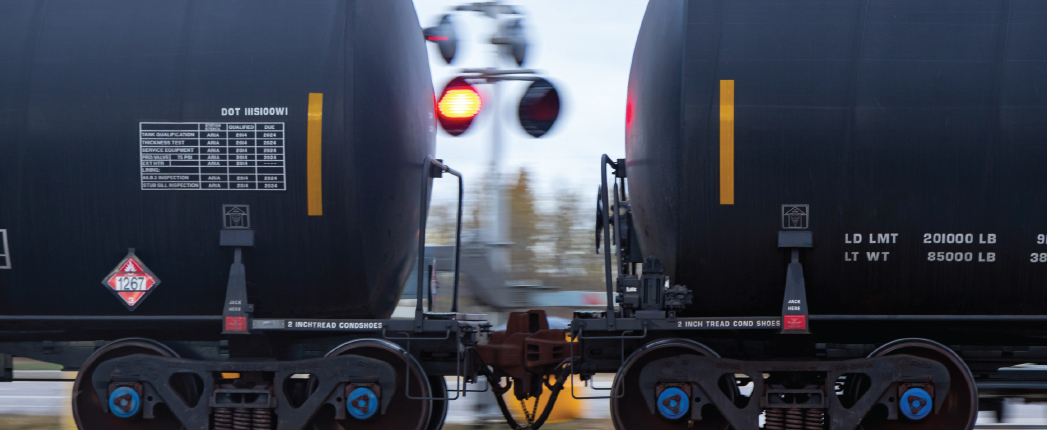
Base Oils Get Moving
By train, boat or automobile, North American base oil makers need to ship their product across the continent. Shipping and logistics are crucial elements to success for these businesses and present a number of challenges all the same. On the truck and rail side of the logistics question, recent changes big and small could alter the transportation landscape in the United States, Canada and Mexico.
Last month, Canadian Pacific Railway acquired Kansas City Southern, one of the largest transporters of base oil and lubricants from the United States into Mexico, for $25 billion, creating the first Canada-to-Mexico railway system in North America. Though the combined companies still make the least revenue of all Class 1 railroads—the largest railroad companies on the continent—the deal is the biggest railroad-railroad merger since the 1990s. More recently, in 2009, financial giant Berkshire Hathaway acquired Burlington Northern Santa Fe for $44 billion.
According to Canadian Pacific, over 300 customers, ports, transloads and other stakeholders have filed statements with the U.S. Surface Transportation Board in support of the acquisition, and have even urged the STB to approve the transaction as quickly as possible. The company said in an April 6 press release that supporters believe the acquisition would “provide new service offerings that would improve transit times and reliability.” The STB review is expected to be completed by the middle of 2022.
As of 2020, there are almost 140,000 route miles in the United States freight rail network, which accounts for about 28% of all freight transported in the country, second only to trucks, according to the U.S. Department of Transportation’s Federal Railroad Administration.
Base oil refiners along the Gulf Coast—home to the majority of the continent’s production—already had access to Mexico and even Canada through existing rail lines, but any company wanting to ship directly from Canada to Mexico and vice-versa could benefit. Canadian Pacific and Kansas City Southern’s networks connect in Kansas City, Missouri, and go straight from one country to the other.
Mexico typically buys around 30% of U.S. base oil exports, according to data from the U.S. Energy Information Administration. A direct pipeline from Canada, where large base oil producers like Petro-Canada reside, could present interesting opportunities for Mexican companies like state-owned Pemex.
Rail is an important method of transportation for North American lubricant and base oil manufacturers. Not only do companies ship product to customers by rail (Jackson, Mississippi-based Ergon Inc., told Lubes’n’Greases’ Lube Report last year that it owns a fleet of more than 1,200 rail cars for this purpose), some ship base oils from one of their facilities to another to make their own finished lubricant products.
Though it doesn’t list specific products, Kansas City Southern says it transported over 21,000 carloads of “petroleum products” throughout the month of March. Kansas City Southern’s 10 largest U.S. terminals include Shreveport and Baton Rouge, Louisiana; Jackson, Mississippi; and Port Arthur, Texas—all of which boast significant base oil and lubricant production.
The railway company, among others, has invested in lubricants before. In 2012, Mexico’s Raloy Lubricants and Kansas City Southern de Mexico opened a transload and storage terminal in Mexico City primarily used for lubricants, base oil, additives, antifreeze and brake fluids. At the time, Kansas City Southern said its primary goal for the center—which has capacity to handle 400 rail cars and 27,000 tons annually—was to expand into the specialized lubricants market. Union Pacific, another Class 1 railway, has also added facilities around the country that can handle base oils.
Different modes of transportation have different advantages. You can move more barrels of base oil with less fuel using barges to go up and down rivers, but weather disruptions can slow down barge traffic and close access to the waterway is required.
Railways cover more route miles than U.S. rivers while being a quicker method of transport, and rail tankcars can carry more volume than trucks (about 34,500 gallons versus 9,000, respectively), but trucks have access to local roads. Base oil companies must find the right mix of transportation options that best suit their needs.
On the trucking side, challenges old and new remain relevant in the industry. The COVID-19 pandemic seemed to exacerbate some issues facing trucking in North America, namely retaining drivers. The pandemic predictably led to lower demand and job losses for drivers: about 94,000 between March and April of last year according to the Bureau of Labor Statistics.
The industry was already challenged with losing more drivers than it was bringing in. Jarrett Flegel of Calgary, Canada-based Boss Lubricants said in a Dec. 15 webinar hosted by the Independent Lubricant Manufacturers Association that a large demographic of drivers in Canada are aged 65 and older. “We’re having a tough time finding new drivers, younger drivers. There’s also a barrier to entry now. Drivers are retiring earlier.”
Steve Raetz, director of research and market intelligence for logistics services provider C.H. Robinson, echoed those thoughts at the same event. “The retirement bubble really is part of the issue with the labor today and the return of capacity after the economic shutdown. Carriers are citing that while we’ve always had this retirement bubble coming at us, it’s been accelerated because of the average age of drivers and because of pre-existing health conditions.”
Fortunately about 82% of trucking jobs have returned, and 2021 was forecast to have a 35,000-tractor increase, said Raetz, which will lead to expanded capacity to meet demand. Other efficiencies that allow fleets to get much higher utilization rates and allow drivers more flexibility in their schedule spell good news.
“We’ve seen a lot more suppliers planning production around [trucking] capacity,” said Adam Kroupa of C.H. Robinson.
Will Beverina is assistant editor for Lubes’n’Greases. Contact him at Will@LubesnGreases.com.